On the Block: Where Jerry Lewis and Buddy Hackett Once Schvitzed
It was a drizzly November morning: perfect weather for picking over a carcass. The remains in question were the Jerry Lewis Monastery, as the Friars Club’s home on East Fifty-fifth Street is formally known. But with the club having defaulted, last year, on what was originally a thirteen-million-dollar mortgage, the six-story town house had gone into foreclosure and was now up for auction. A cluster of real-estate professionals and hospitality-industry types had gathered out front for a tour.
The Friars, founded, in 1904, as a club for press agents and performers, eventually gained fame for its large membership of comedians, among them Milton Berle, Buddy Hackett, Shecky Greene, and, more recently, Gilbert Gottfried and Jimmy Fallon; Lucille Ball and Phyllis Diller were among the first female members, admitted in 1988. If nothing else, the club will forever have a place in show-business history as the originator of the celebrity roast. But recent decades have seen its membership rolls dwindle amid varying degrees of mismanagement. In 2019, a former executive director pleaded guilty to filing false tax returns. In 2020, a burst pipe flooded much of the Monastery, forcing it to close its doors—“Shut tighter than a Kardashian butt-lift,” as Cindy Adams put it in the Post. The club reopened in 2021, but lost its trademark that same year, got ensnared in labor disputes, and shuttered, seemingly for good, in the spring of 2023, after the default. Adding insult to injury, the lender claimed in court papers that the Monastery was in a sorry state, citing trash, evidence of vermin, and containers full of “unidentifiable liquid waste.”
Among the people on the sidewalk was Asher Alcobi, a broker who was representing a hedge-fund owner interested in converting the club into a headquarters. Alcobi, himself a former Friar, scoffed at rumors that a rich comedian had put together a consortium to buy the club and restore it to its former glory. “A guy like that could buy a car for two million dollars and not blink,” Alcobi said, “but ask him for a hundred thousand dollars? Forget it.”
He was joined by a colleague, the ninety-six-year-old Bernie Tedlis, who has been a Friar since 1969. “I was on the board of governors with Alan King,” he said. He was introduced to the club by a friend from kindergarten. He never forgot the time a Friar showed him a card trick that began the usual way, with Tedlis picking a card and sliding it back into the deck. The member then threw the cards against a wall. “They splattered everywhere,” Tedlis recalled. “But mine stuck to the wall. I said, ‘Whoa, I got to join this place!’ ”
It was time to go inside. The Monastery had been tidied up: no garbage, no unidentifiable liquid waste. On the sixth floor, in the Buddy Howe/Sal Greco Health Club, a haphazard pile of towels at least looked clean. In a kitchen off the Barbra Streisand Room, dishes were stacked on shelves, alongside a sign that read “Do not stack on this shelf! Broken!” and a binder from Victory Pest Solutions (motto: “Protecting brands and reputations”). Some candlesticks in a pantry with Chuck Barris’s name on the door appeared undisturbed. A picture of the late Richard Lewis stared back at anyone using the urinals in the basement men’s room.
The “tour” was more of an open house, with groups of people roaming around. Up in the health club, Tedlis remembered the time the songwriter Irving Caesar serenaded him in the steam room with his hit “Tea for Two.” Tedlis added, “The rule at the club was no matter how you felt when you walked in, you felt better when you walked out.”
Nominally in charge was Mickey Salzman, a vice-president at Northgate Real Estate Group, the company holding the auction. Friendly but harried as he tried to maintain order, Salzman said that potential bidders fell into “five different buckets,” depending on what they might use the property for: private club, restaurant, boutique hotel, “single-flagship retail,” and, most intriguing, embassy or consulate. (Perhaps Freedonia’s?) Salzman didn’t say whether the auction had a floor price, but two comparable properties on the Upper East Side are each priced at above fifty million dollars. The Monastery’s German Renaissance exterior is landmarked, but the interior, with its wood panelling, plaster ceilings, stained glass, and other Gothic details, is not. While some appraisers delighted in these touches, a man with renovation experience cautioned, “It’s wonderful, but you have to see what’s behind the curtain. How’s the wiring? Is there mold? You don’t know how much asbestos is there.” Renovating the Monastery, he guessed, might cost twice as much as gutting it.
“It’s heartbreaking, but comedians aren’t typically good businesspeople,” someone remarked back in the lobby. It was time to leave; the bones had been fully inspected. ♦










